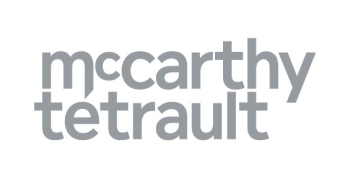On August 26 2016 the Department of Finance Canada announced the launch of the first of a two-stage consultation process on the federal financial sector legislative and regulatory framework. Sunset provisions in the Insurance Companies Act (as well as in the Bank Act, Cooperative Credit Associations Act and Trust and Loan Companies Act) require regular review and updating of the federal financial sector legislative and regulatory framework. The Budget Implementation Act 2016 No 1 extended the statutory sunset date in the financial institutions statutes by two years until 2019 to facilitate the review process.
In launching the first stage of a two-stage process, while acknowledging the high quality and reputation of the Canadian financial sector, the department noted that it is important to consult with Canadians with a view to advancing the stability, efficiency and utility of the sector as it conducts its regular review of the legislative and regulatory framework as required by the legislation.
In its consultation document entitled "Supporting a strong and growing economy: positioning Canada's financial sector for the future", the department provides an overview of the Canadian financial sector landscape and explains its policy context and focus on stability. It goes on to describe the current trends and regulatory environment, including:
- the current macroeconomic backdrop;
- increased concentration and the changing competitive landscape;
- the internationalisation of Canadian financial institutions;
- the evolving financial marketplace for consumers;
- the financial innovation and emergence of financial technologies;
- demographic changes (Canada's ageing population and the millennial generation);
- emerging risks (including the rise of catastrophic risks due to urbanisation, terrorism and climate and environmental change); and
- its three core policy objectives of stability, efficiency and utility.
The department seeks input from Canadians on the trends that are highlighted in the paper, the implications of these trends and the areas where action is possible and desirable.
The department notes that many life and health insurers have become more diversified, have expanded into a broader array of wealth management activities and have become more international in their operations. Canada's property and casualty insurance industry has undergone consolidation, with the market share of the three largest companies increasing from 25% in 2007 to 31% in 2014. Northern Alberta's wildfire in May 2016 is the costliest insured natural disaster in Canadian history.
In this first stage of the consultation process, the department is seeking input from stakeholders on the priorities for reviewing the financial sector framework to be set out in its policy paper to be published for consultation in 2017. It has asked the following questions:
- What are your views on the trends and challenges identified in this paper? Are there other trends or challenges that you expect may significantly influence the financial sector going forward?
- How well does the financial sector framework currently balance trade-offs between the three core policy objectives of stability, efficiency and utility?
- Can lessons be learned from other jurisdictions to inform how to address emerging trends and challenges?
- What actions could be taken to strengthen the financial sector framework and promote economic growth, including with respect to the identified themes? How should those actions be prioritised?
- What other actions should be taken to ensure that the financial sector framework remains modern and technically sound?
Written comments should be submitted by November 15 2016.




